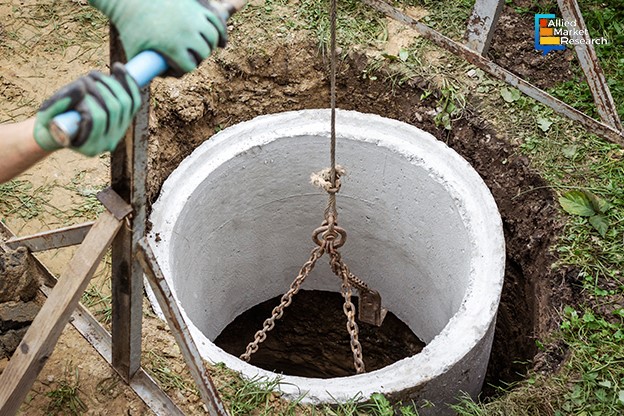How Drilling and Cementing Services Keep Geothermal Wells Strong

24 Mar
2025
Highlights:
- Introduction
- Contribution of smart technology in drilling and cementing
- Recent developments in the corner
Drilling and cementing are two important steps in setting up geothermal energy projects. These services make sure that geothermal energy is extracted safely and efficiently. Geothermal energy is a natural source of heat from beneath the Earth's surface. To use it, companies need to drill deep into the ground. But drilling alone is not enough. Cementing is needed to secure the well and protect the surrounding environment. Without proper drilling and cementing, geothermal wells may not function properly, leading to safety hazards and environmental damage.
Why drilling needs precision
Drilling is more than just digging a hole in the ground. It involves creating deep wells to access underground heat sources, which can be several miles beneath the Earth's surface. The deeper a well goes, the hotter the temperature, making drilling more difficult. High-pressure steam and hot water can create challenges, and if drilling is not done correctly, the well can collapse, leading to high repair costs. Companies now use advanced drilling techniques to reduce risks, cut costs, and improve efficiency. Special equipment helps explore extreme underground conditions, ensuring that geothermal energy can be accessed safely and effectively.
Risks associated with poor cementing
Cementing is the process of sealing the well after drilling, and it is just as important as the drilling itself. If cementing is not done properly, the well can become unstable, allowing harmful substances to leak into surrounding water sources. This can cause environmental contamination and long-term damage to the ecosystem. The cement used in geothermal wells is specially designed to withstand extreme heat and pressure, ensuring that the well remains strong for years. Cementing also prevents fluids from moving between underground layers, protecting both the well and the surrounding area. A poorly cemented well can lead to expensive repairs, production delays, and safety hazards, making this step essential in geothermal projects. The well cementing services industry accounted for $8.9 billion in 2023 and is predicted to gather a revenue of $13.4 billion by 2033, rising at a CAGR of 4.2% during 2024-2033.
New deals driving the future of geothermal energy
Companies are making major investments in drilling and cementing services to improve geothermal energy production. Recently, Uzma Engineering Limited secured a contract with Philippine Geothermal Production Company Inc. to provide drilling and cementing services in the Philippines. This project, running from 2024 to 2027, will help strengthen the country’s geothermal energy supply. Uzma’s expertise is expected to ensure that geothermal wells in the Philippines are drilled with precision and sealed properly to prevent failures.
Another major development in the industry is ADNOC Drilling’s new joint venture with SLB and Patterson-UTI. This partnership focuses on using artificial intelligence and automation to improve drilling efficiency. AI-powered designs and real-time monitoring are helping reduce costs and improve safety in geothermal projects.
How smart technology is changing drilling and cementing
Artificial intelligence is playing a bigger role in drilling operations, helping companies predict and prevent problems before they happen. AI-powered systems analyze data from past drilling projects to identify risks and suggest solutions. Some companies are also using drones and remote sensors to monitor drilling sites in real time. This reduces downtime, improves safety, and makes sure that wells are drilled with high precision.
Another breakthrough is the use of smart cement, which can adapt to changing underground conditions. This type of cement helps improve well integrity, reducing the chances of leaks or damage. Companies are also working on environmentally friendly drilling fluids that lower the impact of drilling operations. These new technologies are making geothermal energy production safer, more reliable, and more efficient.
The environmental cost of getting it wrong
Geothermal energy is a clean and renewable resource but drilling and cementing must be done carefully to avoid harming the environment. Poorly sealed wells can release gases into the atmosphere, while drilling waste can contaminate nearby water sources. Many companies are now using cleaner technologies to reduce emissions from drilling operations. Some are developing safer methods for disposing of drilling waste to prevent pollution.
Another challenge is maintaining well integrity over time. If a geothermal well weakens, it can develop leaks, which can be harmful to both the environment and nearby communities. Proper cementing techniques ensure that wells remain secure for decades, reducing the chances of unexpected failures. With the introduction of stricter environmental regulations by governments, companies are finding new ways to balance energy production with environmental protection.
What lies ahead
As the world is on the lookout for cleaner energy solutions, geothermal energy is becoming a more attractive option. The demand for high-quality drilling and cementing services is increasing, making companies invest in better technologies. The focus is most likely to remain on improving safety, reducing costs, and minimizing environmental impact. The use of artificial intelligence, automation, and smart materials is expected to transform the future of geothermal energy projects. With the advancement of technology, drilling and cementing are projected to become even more efficient, helping to expand the use of geothermal energy worldwide.
Connect with our experts for valuable insights into the industry!

Koyel Ghosh
Author’s Bio- Koyel Ghosh is a blogger with a strong passion and enjoys writing in miscellaneous domains, as she believes it lets her explore a wide variety of niches. She has an innate interest in creativity and enjoys experimenting with different writing styles. A writer who never stops imagining, she has been serving the corporate industry for the last five years.
Avenue: Entire Library membership of Allied Market Research Reports at your disposal
- Avenue is an innovative subscription-based online report database.
- Avail an online access to the entire library of syndicated reports on more than 2,000 niche industries and company profiles on more than 12,000 firms across 11 domains.
- A cost-effective model tailored for entrepreneurs, investors, and students & researchers at universities.
- Request customizations, suggest new reports, and avail analyst support as per your requirements.
- Get an access to the library of reports at any time from any device and anywhere.
Related Post
-
How are Submarine Cables Transforming Global Connectivity with Enhanced User Experience?
-
Endoscopy Procedures: Transformations in Techniques and Applications
-
AI-Powered Video Analytics: How the Product Actually Works for enterprises
-
Painting Robots: Transforming Precision Coating and Creative Applications
-
Innovations in Pharmacovigilance Systems Advancing Patient Safety
-
Understanding Edge Security: Keeping Data Safe Near the Source
-
Exploring the Use and Advancements of 3D Laser Scanners in Professional Applications
-
Reinforcing Industrial Controls with Smarter Tools and Training








